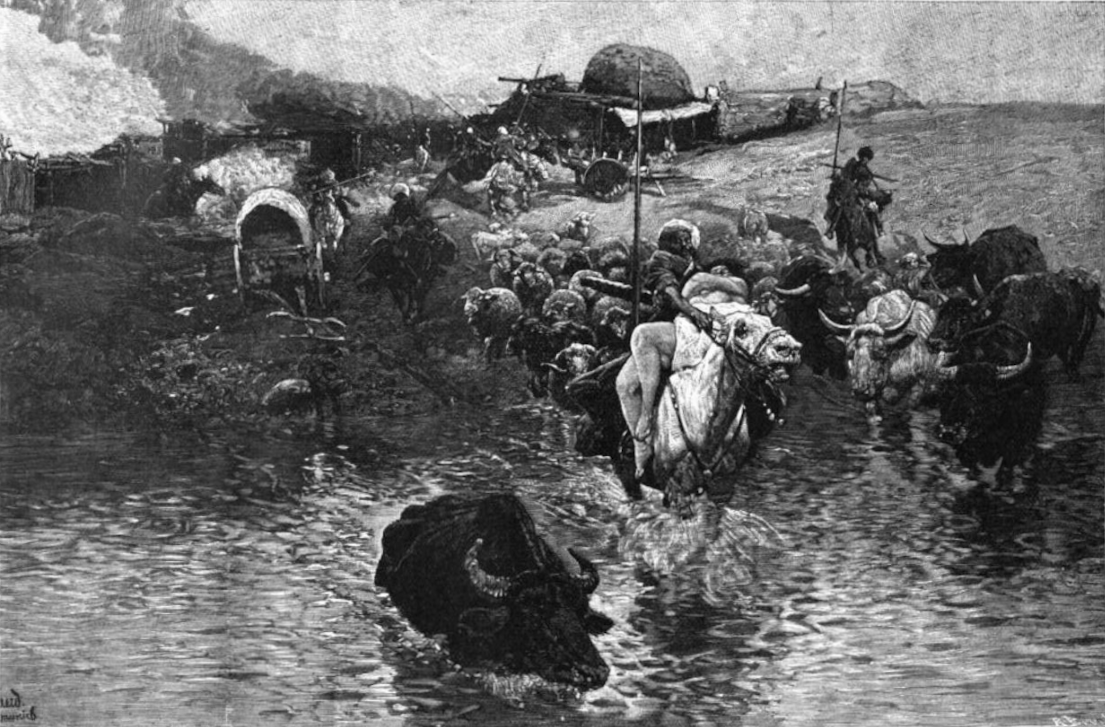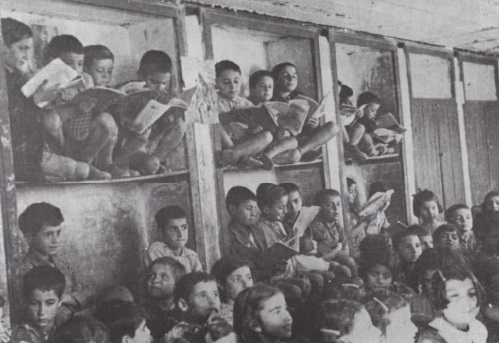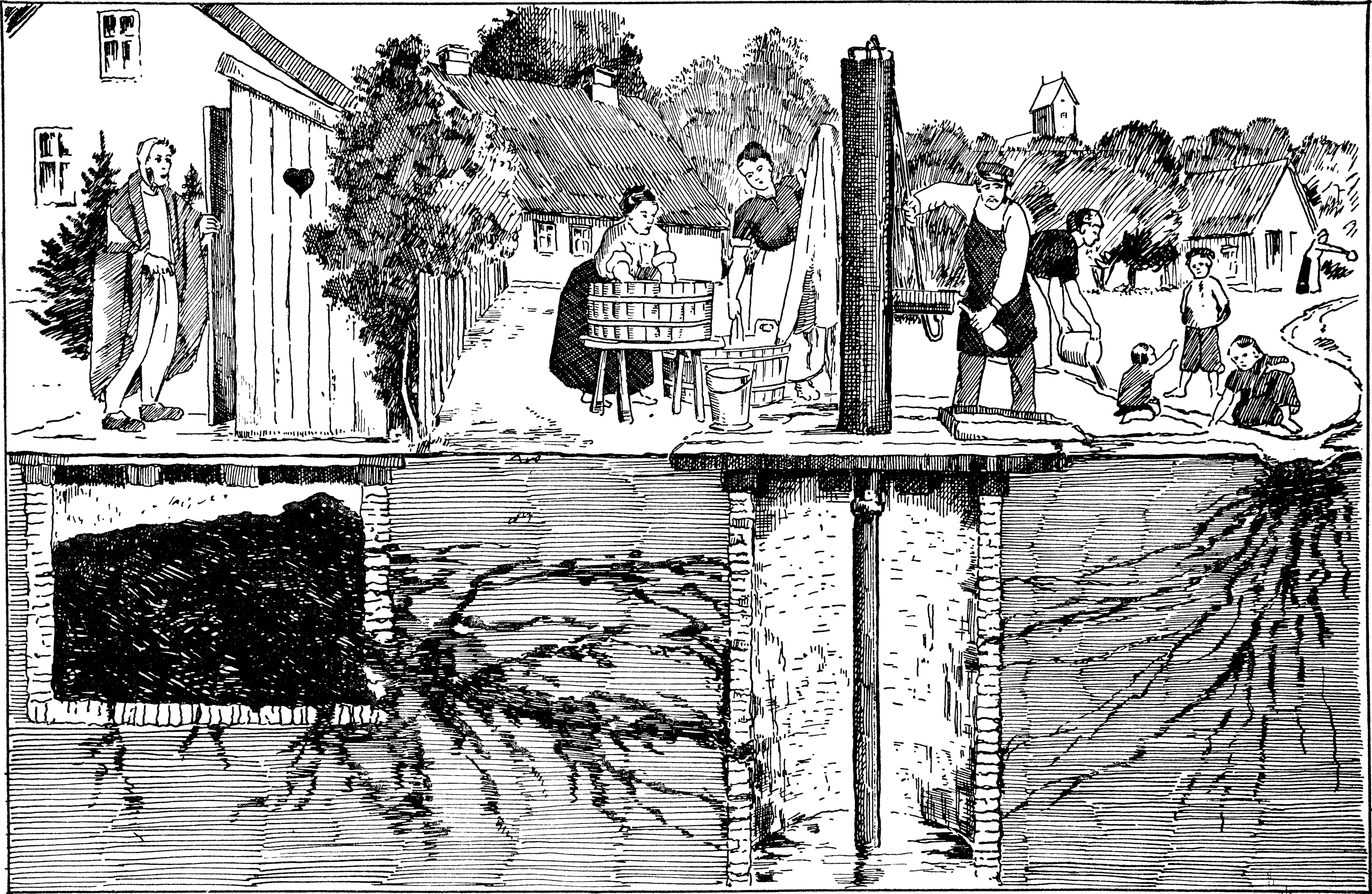|
Ras Al-Ayn Camps
Ra's al-'Ayn camps (also Ras ul-Ain camps) were desert death camps near the city of Ras al-Ayn, where many Armenians were deported and slaughtered during the Armenian genocide. The site became "synonymous with Armenian suffering". History Ras al-Ayn became a major collecting place for deported Armenians from Anatolia. By September 1915, groups of refugees (usually made up of women and children) began to arrive after the exhausting journey. In April 1916 the German consul reported "again massacre at Ras ul Ain": "300 to 500 deportees are taken out of the concentration camp each day and butchered at a distance of 10 km. from Ras ul Ain" In the summer of 1916 new rounds of massacres were improvised by the Turkish government in the areas of Deir ez-Zor, Rakka and Ras ul-Ain.. In 1916, over 80,000 of Armenians were slaughtered in Ras al-Ayn. According to reports, in one day alone 300-400 women arrived to the camps completely naked and were plundered by Chechens and gendarmerie: "All the ... [...More Info...] [...Related Items...] OR: [Wikipedia] [Google] [Baidu] |
Armenian Genocide
The Armenian genocide was the systematic destruction of the Armenians, Armenian people and identity in the Ottoman Empire during World War I. Spearheaded by the ruling Committee of Union and Progress (CUP), it was implemented primarily through the mass murder of around one million Armenians during death marches to the Syrian Desert and the Forced conversion, forced Islamization of others, primarily women and children. Before World War I, Armenians occupied a somewhat protected, but subordinate, place in Ottoman society. Large-scale massacres of Armenians had occurred Hamidian massacres, in the 1890s and Adana massacre, 1909. The Ottoman Empire suffered a series of military defeats and territorial losses—especially during the 1912–1913 Balkan Wars—leading to fear among CUP leaders that the Armenians would seek independence. During their invasion of Caucasus campaign, Russian and Persian campaign (World War I), Persian territory in 1914, Special Organization (Ottoman ... [...More Info...] [...Related Items...] OR: [Wikipedia] [Google] [Baidu] |
The New York Times
''The New York Times'' (''NYT'') is an American daily newspaper based in New York City. ''The New York Times'' covers domestic, national, and international news, and publishes opinion pieces, investigative reports, and reviews. As one of the longest-running newspapers in the United States, the ''Times'' serves as one of the country's Newspaper of record, newspapers of record. , ''The New York Times'' had 9.13 million total and 8.83 million online subscribers, both by significant margins the List of newspapers in the United States, highest numbers for any newspaper in the United States; the total also included 296,330 print subscribers, making the ''Times'' the second-largest newspaper by print circulation in the United States, following ''The Wall Street Journal'', also based in New York City. ''The New York Times'' is published by the New York Times Company; since 1896, the company has been chaired by the Ochs-Sulzberger family, whose current chairman and the paper's publ ... [...More Info...] [...Related Items...] OR: [Wikipedia] [Google] [Baidu] |
20th Century In Syria
__NOTOC__ This is a timeline of Syrian history, comprising important legal and territorial changes and political events in Syria and its predecessor states. To read about the background to these events, see History of Syria. Millennia: 1st BC 1st–2nd 3rd Centuries: 1st2nd 3rd4th 5th 6th7th8th 9th 10th 11th12th13th 14th 15th 16th 17th 18th19th 20thSee alsoFurther reading 1st century BC 1st century 2nd century 3rd century 4th century 5th century 6th century 7th century 8th century 9th century 10th century 11th century 12th century 13th century 14th century 15th century 16th century 17th century 18th century 19th century Massacre of Aleppo 1860 Mount Lebanon civil war 20th century 21st century See also ;Cities in Syria * Timeline of Aleppo * Timeline of Damascus * Timeline of Hama * Timeline of Latakia References BBC – Syria timelinetimelines.ws Extensive timeline – ... [...More Info...] [...Related Items...] OR: [Wikipedia] [Google] [Baidu] |
Armenian Genocide Extermination Centers
Armenian may refer to: * Something of, from, or related to Armenia, a country in the South Caucasus region of Eurasia * Armenians, the national people of Armenia, or people of Armenian descent ** Armenian diaspora, Armenian communities around the world * Armenian language, the Indo-European language spoken by the Armenian people ** Armenian alphabet, the alphabetic script used to write Armenian ** Armenian (Unicode block) People * ''Armenyan'', also spelled ''Armenian'' in the Western Armenian language, an Armenian surname **Haroutune Armenian (born 1942), Lebanon-born Armenian-American academic, physician, doctor of public health (1974), Professor, President of the American University of Armenia **Gohar Armenyan (born 1995), Armenian footballer **Raffi Armenian (born 1942), Armenian-Canadian conductor, pianist, composer, and teacher Others * SS ''Armenian'', a ship torpedoed in 1915 See also * * Armenia (other) Armenia is a country in the South Caucasus region of ... [...More Info...] [...Related Items...] OR: [Wikipedia] [Google] [Baidu] |
University Of California Press
The University of California Press, otherwise known as UC Press, is a publishing house associated with the University of California that engages in academic publishing. It was founded in 1893 to publish scholarly and scientific works by faculty of the University of California, established 25 years earlier in 1868. As the publishing arm of the University of California system, the press publishes over 250 new books and almost four dozen multi-issue journals annually, in the humanities, social sciences, and natural sciences, and maintains approximately 4,000 book titles in print. It is also the digital publisher of Collabra and Luminos open access (OA) initiatives. The press has its administrative office in downtown Oakland, California, an editorial branch office in Los Angeles, and a sales office in New York City, New York, and distributes through marketing offices in Great Britain, Asia, Australia, and Latin America. A Board consisting of senior officers of the University of Cali ... [...More Info...] [...Related Items...] OR: [Wikipedia] [Google] [Baidu] |
Armenians In Syria
The Armenians in Syria are Syrian citizens of either full or partial Armenians, Armenian descent. Syria and the surrounding areas have often served as a refuge for Armenians who fled from wars and persecutions such as the Armenian genocide. However, there has been an Armenian presence in the region since the Byzantine era. According to the Ministry of Diaspora of Armenia, the estimated number of Armenians in Syria is 100,000, with more than 60,000 of them centralized in Aleppo. With other estimates by Armenian foundations in Syria putting the number around 70–80,000. However, since the start of the conflict, 16,623 Syrian citizens of ethnic Armenian background have arrived in Armenia. Of these displaced persons, 13,000 remained and found protection in Armenia as of July 2015. The government is offering several protection options including simplified naturalization by Armenians in the Middle East, Armenian descent (15,000 persons acquired Armenian nationality law, Armenian citiz ... [...More Info...] [...Related Items...] OR: [Wikipedia] [Google] [Baidu] |
Death March
A death march is a forced march of prisoners of war, other captives, or deportees in which individuals are left to die along the way. It is distinct from simple prisoner transport via foot march. Article 19 of the Geneva Convention requires that prisoners must be moved away from a danger zone such as an advancing front line, to a place that may be considered more secure. It is not required to evacuate prisoners who are too unwell or injured to move. In times of war, such evacuations can be difficult to carry out. Death marches usually feature harsh physical labor and abuse, neglect of prisoner injury and illness, deliberate starvation and dehydration, humiliation, torture, and execution of those unable to keep up the marching pace. The march may end at a prisoner-of-war camp or internment camp, or it may continue until all those who are forced to march are dead. Notable death marches Jingkang incident In 1127, during the Jin–Song wars, the forces of the Jurchen-led ... [...More Info...] [...Related Items...] OR: [Wikipedia] [Google] [Baidu] |
The Cut (2014 Drama Film)
''The Cut'' is a 2014 internationally co-produced drama film directed by Fatih Akın. It was selected to compete for the Golden Lion at the 71st Venice International Film Festival. The film is about the life and experiences of a young Armenian by the name of Nazareth Manoogian against the backdrop of the Armenian genocide and its repercussions in different parts of the world. Plot The film starts by showing Nazareth's life as a blacksmith in the city of Mardin, where he used to live with his family. Although Nazareth had his suspicions about possible effects of the World War I, and he was considering the possibility of non-Muslim minorities of the Ottoman Empire being conscripted to fight in the army, his family and friends were trying to be optimistic, although they had heard stories about men from different villages disappearing . One night, Ottoman soldiers came to his door and took him to work for the army at a road construction, which was basically in the middle of an uninh ... [...More Info...] [...Related Items...] OR: [Wikipedia] [Google] [Baidu] |
Aram Andonian
Aram Andonian (; 1875 – 23 December 1951) was an Armenian journalist, historian and writer. Biography Andonian was born in Constantinople and was ethnic Armenian. There he edited the Armenian journals ''Luys'' (''Light'') and ''Dzaghik'' (''Flower'') and the newspaper ''Surhandak'' (''Herald''). Andonian then went on to serve in the department of military censorship of the Ottoman Empire. He was arrested by order of interior minister Talat Pasha of the Ottoman Empire on the eve of 24 April 1915, and joined the large number of Armenian notables who were deported from the Ottoman capital. Andonian was deported to Chankiri, then, halfway there, returned to Ankara and was deported again to the camps in the Ra's al-'Ayn and Meskene. However, Andonian survived in Aleppo in the underground. When British forces occupied Aleppo, a lower-level Turkish official, Naim Bey collaborated with Aram Andonian in publishing his memoirs, an account of the deportation of the Armenians. '' The Memo ... [...More Info...] [...Related Items...] OR: [Wikipedia] [Google] [Baidu] |
Henry Morgenthau, Sr
Henry Morgenthau (; April 26, 1856 – November 25, 1946) was a German-born American lawyer and businessman, best known for his role as the ambassador to the Ottoman Empire during World War I. Morgenthau was one of the most prominent Americans who spoke about the Greek genocide and the Armenian genocide of which he stated, "I am firmly convinced that this is the greatest crime of the ages." Morgenthau was the father of the politician Henry Morgenthau Jr. His grandchildren include Robert M. Morgenthau, District Attorney of Manhattan for 35 years, and Barbara W. Tuchman, a historian who earned the Pulitzer Prize for her book '' The Guns of August''. Early life and education Morgenthau was born the ninth of 11 living children, in Mannheim, Baden (present-day Baden-Württemberg, Germany), in 1856 into an Ashkenazi Jewish family. He was the son of Lazarus and Babette (Guggenheim) Morgenthau. His father was a successful cigar manufacturer who had cigar factories at Mannheim, Lors ... [...More Info...] [...Related Items...] OR: [Wikipedia] [Google] [Baidu] |
Typhoid
Typhoid fever, also known simply as typhoid, is a disease caused by ''Salmonella enterica'' serotype Typhi bacteria, also called ''Salmonella'' Typhi. Symptoms vary from mild to severe, and usually begin six to 30 days after exposure. Often there is a gradual onset of a high fever over several days. This is commonly accompanied by weakness, abdominal pain, constipation, headaches, and mild vomiting. Some people develop a skin rash with rose spots, rose colored spots. In severe cases, people may experience confusion. Without treatment, symptoms may last weeks or months. Diarrhea may be severe, but is uncommon. Other people may carry it without being affected, but are still contagious. Typhoid fever is a type of enteric fever, along with paratyphoid fever. ''Salmonella enterica'' Typhi is believed to infect and replicate only within humans. Typhoid is caused by the bacterium Salmonella enterica subsp. enterica, ''Salmonella enterica'' subsp. ''enterica'' serovar Typhi growing in t ... [...More Info...] [...Related Items...] OR: [Wikipedia] [Google] [Baidu] |




